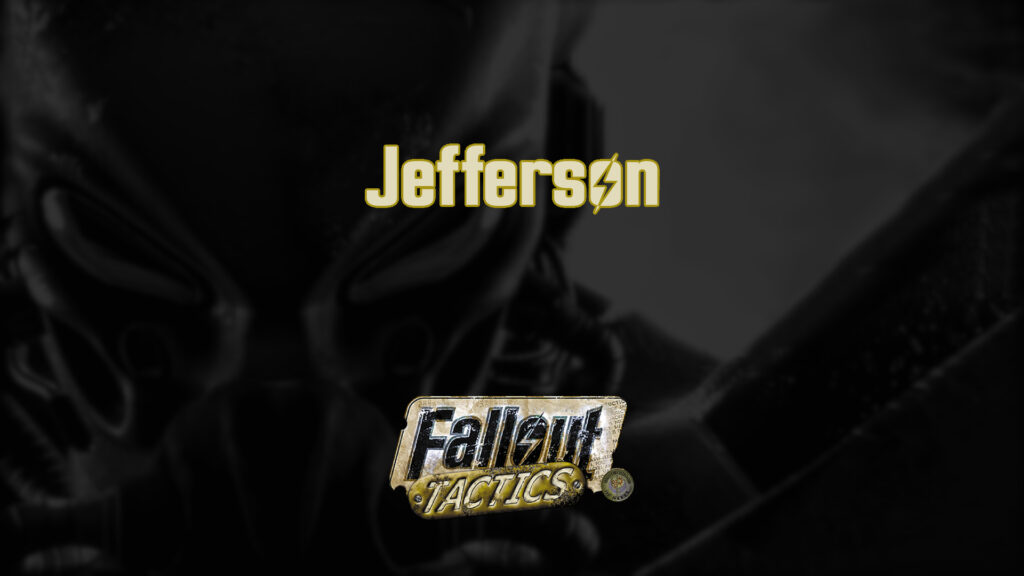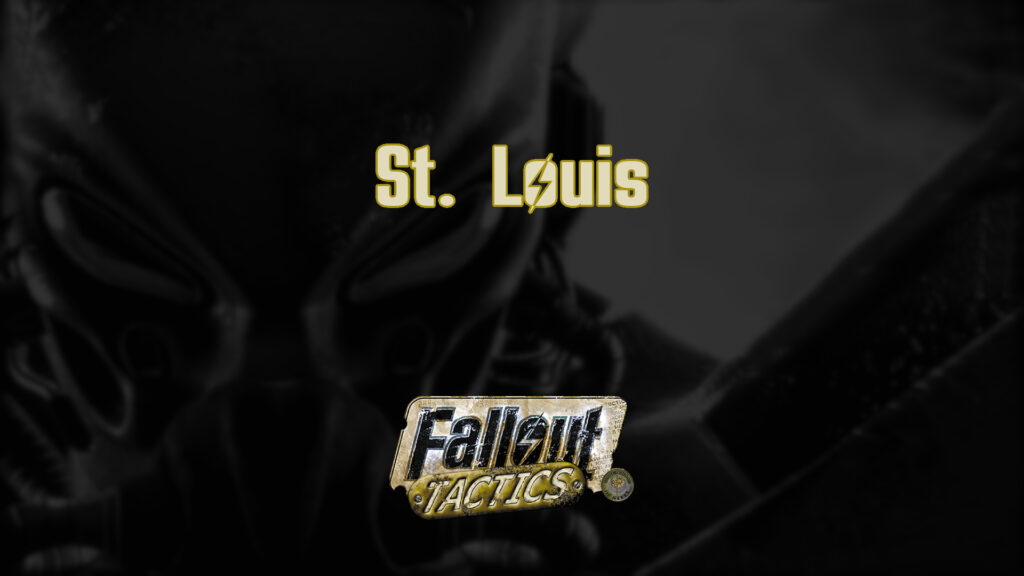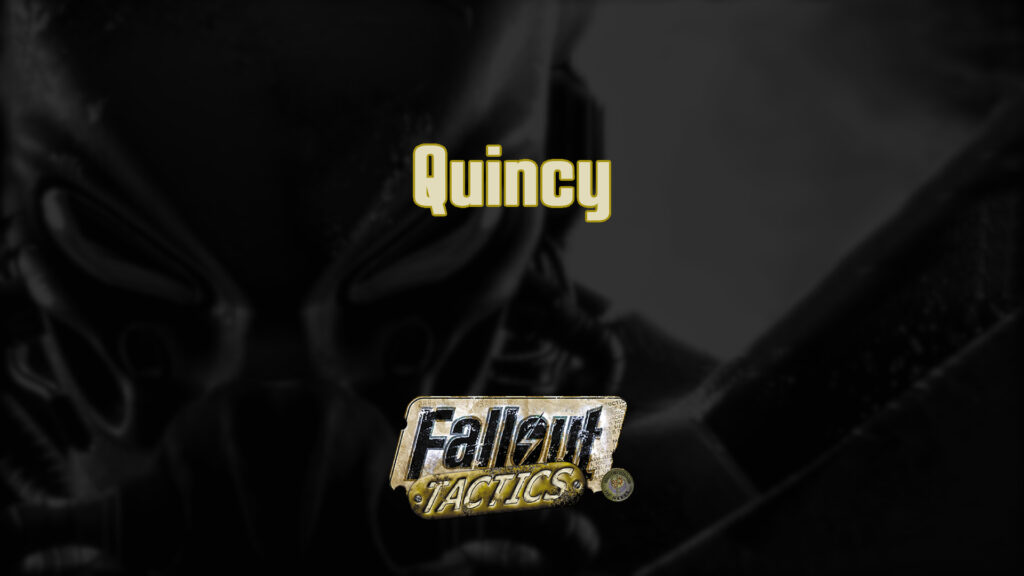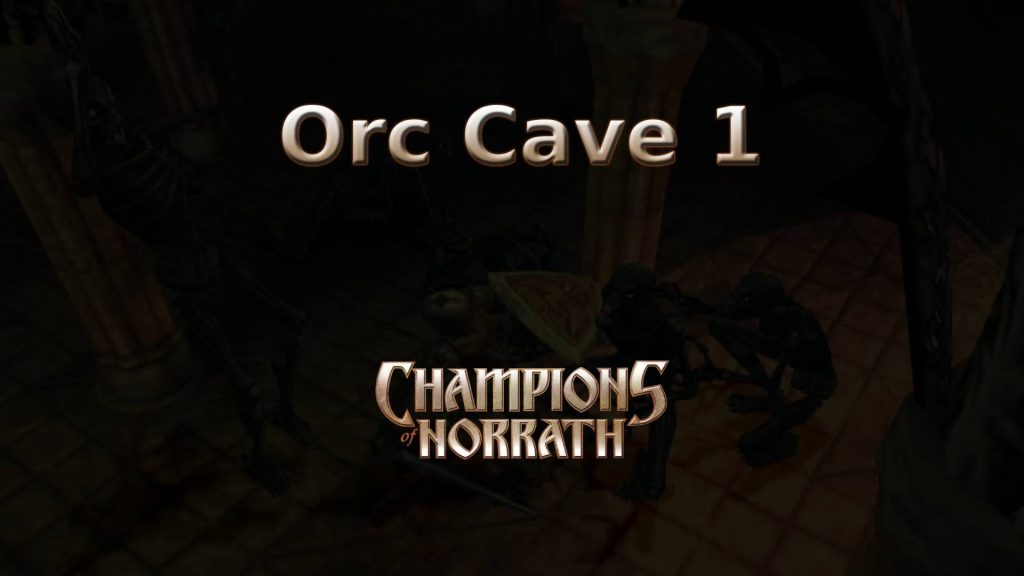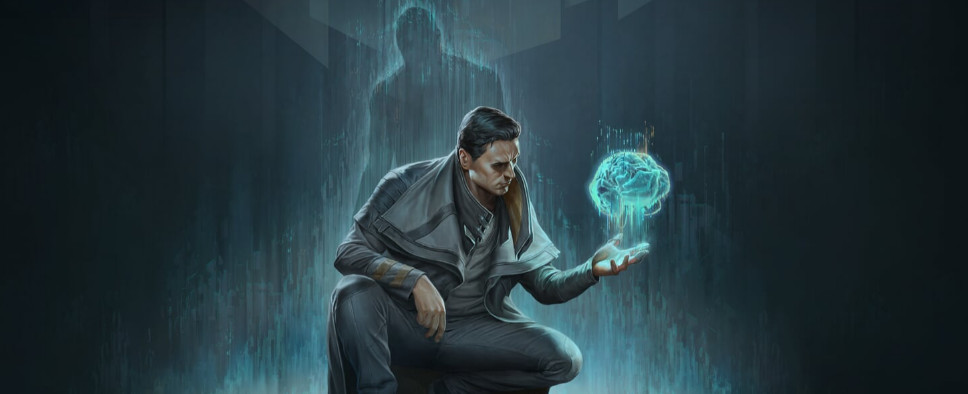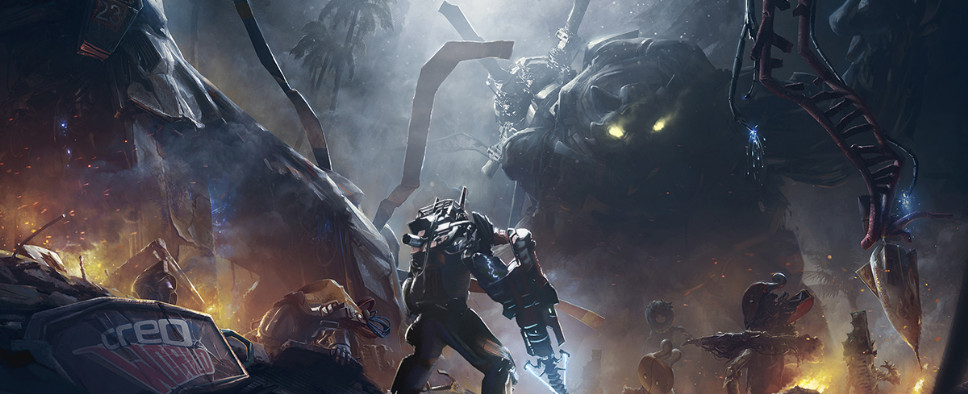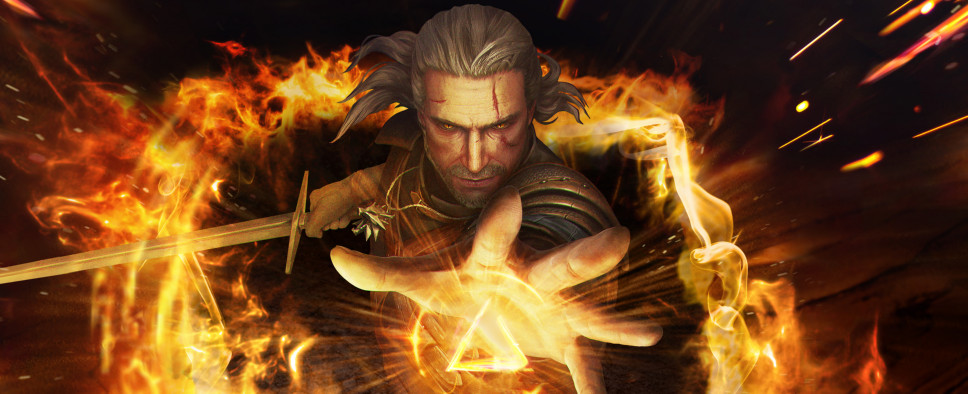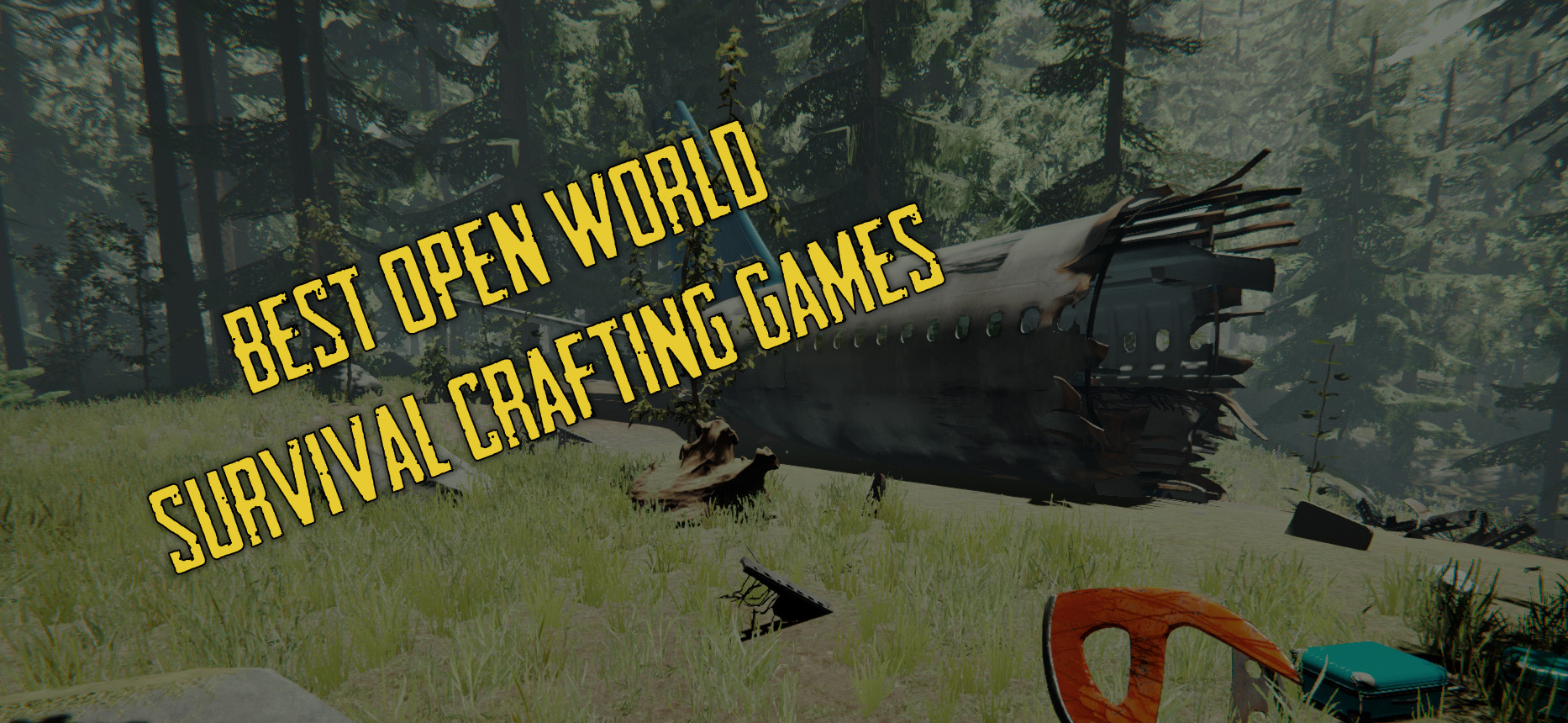Introduction
Back in 2017, Deck13 together with their publishers at Focus Home Interactive, released The Surge - a melee-focused sci-fi action-RPG that was very clearly inspired by FromSoftware's Dark Souls series. The game's setting and aesthetics, together with a promise of visceral melee combat, were enough to put it on my radar, but I somehow never got around to playing it. But now, with The Surge 2 on the way, I figured I had to go back and see what the first entry in the series was all about.
Don't Tell Me What I Can't Do
The game opens with you controlling Warren, a wheelchair-bound individual on his way to a new job where one of the main perks is a shiny new “Exo-Rig” that can help him regain control of his legs. The job is with CREO, a corporation that outwardly seems very interested in restoring Earth's barely breathable atmosphere in the not so distant but quite dystopian future.
While Warren is getting outfitted with said Exo-Rig, something goes terribly wrong and after a while he wakes up in a pile of garbage. While stretching his new legs, Warren realizes that a mysterious power surge has managed to fry most of the tech inside the expansive CREO facility and turn its heavily augmented workers into cyber-zombies.
The game's visuals are sharp and quite easy on the eye, so expect to navigate all sorts of factory floors and research labs packed with conveyor belts, thick wires, narrow walkways, and bulky machinery. In The Surge, tech tends to be massive, hefty and look like it weighs a ton, which I liked a great deal. The other side of this coin, however, is that the majority of the base game locations are all part of the same facility and as a result the visuals, while impressive, can be quite lacking in variety.
As you explore, you will stumble onto a few other survivors and with their moral support, as it seems like Warren is the only CREO employee who isn't stuck somewhere or wasn't reduced to a quivering mess, try to figure out what went wrong and if possible reverse the effects of the eponymous Surge.
The game's story is told primarily through conversations with those other survivors and the audio logs scattered throughout the levels. With their help you gradually start to uncover the bigger picture and learn that CREO isn't exactly the shining beacon of hope it pretends to be and instead treats its workers as disposable grunts, while apparently listing “mad scientist” as a prerequisite for any and all of its research positions.
With that in mind, the story goes through quite a few ups and downs, hits you with a number of twists of varying predictability and just for good measure, leaves some things open to interpretation.
Overall, I found the story to be fairly enjoyable, if a bit obtuse. But at the very least, it was unintrusive. The number of cutscenes that take control away from you is extremely limited, the conversations are usually short and to the point, and the audio logs can play in the background while you continue playing. Perhaps my biggest gripe with the story is that the final act feels somewhat rushed, though that also means that the game doesn't needlessly drag on for too long.
Moving on from the main story, the game's side quests follow the Dark Souls formula pretty much to the letter. You meet a number of NPCs who all have something they want from you, you perform their minor tasks, and later on, you get to learn a bit more about them while being offered a new task. It all usually ends in some sort of tragedy and rewards you with a unique piece of equipment. The quests are easy to miss and even easier to mess up, but unless you come into the game with the mindset of doing everything in a single playthrough, it shouldn't be a problem and instead can add some uniqueness to your playthrough.
Throughout this all, what struck me as a bit odd was that Warren, our protagonist, didn't seem too bothered by all the chaos and horrors caused by the Surge. His general attitude throughout the game could be best described as nonchalant with the slightest bit of confusion. Initially, it didn't feel right to me, but after a while, in my head, I traced a parallel between Warren and John Locke from the show Lost, where the fact that they were able to walk again was more important to these characters than whatever else was going on. Having figured that out, I gradually started to like Warren and his stoic personality.
Improvise, Adapt, Overcome
The basics of The Surge's combat system share more than a few similarities with the Dark Souls series. You have two types of primary attacks (vertical and horizontal in this case) that can be comboed together, as well as an assortment of less obvious moves like dashing and sliding attacks. The actions you can perform are limited by a quickly replenishing stamina bar that also limits your dodging abilities. Health in this system is a finite resource that you can generally restore only a few times before you have to rest, which usually respawns all the enemies on the map. And unless you're careful, you can die even to the most basic of foes.
The Surge adds another layer to this formula by introducing the energy bar. As you attack, your stamina drains, but your energy level grows. You can then spend it to use special finishing moves and activate various implants. Throughout most of the game you can have a drone follow you around, which allows you to also spend your energy reserves on your drone's attacks that range from a simple ramming maneuver to a gravitational pull.
Another feature unique to The Surge is the directional aiming system that allows you to lock onto specific body parts of your enemies. This lets you attack their weak spots, but it's also the primary method of obtaining new items. See, if you keep attacking a specific body part and then use a finishing move, you'll chop that limb straight off, which will allow you to add your enemy's weapons and armor to your collection. This means you have to consider whether you're better off hitting your enemies where it hurts or attacking their armored limbs to get your hands on their gear.
As you defeat your enemies you will start accumulating Tech Scrap that you can then use to increase your Exo-Rig's core power. This represents the game's leveling system, as your core power determines how much gear and implants you can equip at any given time, and how powerful some of those implants will be. In the typical Dark Souls fashion, if you die, you drop your accumulated scrap but are then given an opportunity to get it back. However, unlike Dark Souls, The Surge imposes a time limit on scrap recovery.
Since you don't get a shield here, blocking isn't as useful as it was in Dark Souls, but you can still do it. And if you're feeling daring and confident enough, instead of blocking, you can try to duck under or hop over an incoming attack, save some stamina in the process and get a chance to use a quick counter-attack.
The game's weapons are separated into five distinct categories, like one-handed weapons, heavy weapons, or staves. Within a category, weapons tend to have similar but not identical move sets, which makes it wise to give the new stuff you find a try to see if it suits you better than what you already have.
The armor comes in sets, and if you equip all six pieces of a matching set, you get a special set bonus, like faster stamina regeneration or higher maximum health.
As you can see, the combat system is fairly complex, and if you add all the other tricks you have at your disposal along with the miscellaneous stats like Impact, Stability and Weapon Proficiency into the mix, it can even feel a bit overwhelming. Still, if you're familiar with Dark Souls, you'll be able to figure out what all those stats do, and if not, all you have to know is that you should keep hitting your enemies and do your best to not get hit in return. After all, for whatever reason a certain level of mechanical mystery can be considered a genre staple at this point.
Another genre staple is a fairly high level of challenge. The Surge is a curious specimen in that regard. During the first few hours the game seems extremely difficult - you don't know where to go or what to do and most enemies can kill you in roughly two hits. But once you get a few levels, equip some decent implants, and familiarize yourself with the intricacies of the combat system, things become much less dire. In fact, discounting the early sections, the game can be considered fairly easy when compared to others in the genre.
This is especially noticeable during the boss fights. Unless you miss some trick or obvious mechanic, you shouldn't die more than a couple of times on any of the game's bosses. There's also not that many of them.
Understandably, this can be disappointing to a lot of people. On the other hand, personally, I never saw boss fights in these games as anything but a skill check that prevented me from doing what I actually enjoyed, which was exploring expansive levels, learning about the game's world, discovering new items and secrets, and trying out various characters builds. Still, when I defeated one of the game's bosses by running past a bunch of robot arms and mindlessly smashing its core without being in any real danger, even I could see just how lacking the boss design of The Surge was.
On the plus side, each of the boss fights has some trick to it that makes the fight harder, but in the end rewards you with better loot, so at least you can challenge your skills that way.
As opposed to the bosses, the basic enemies can be quite tricky. They generally avoid cheap tactics like swarming you with superior numbers or pushing you into bottomless pits, and instead they fight fair, but do quite a bit of damage. The game's animations are fluid and precise enough that I never felt that I took damage when I shouldn't have. And since every attack feels like it has a lot of weight behind it, the combat can be quite satisfying, especially when you manage to pull off a finishing move a fraction of a second before getting hit.
Of course things rarely are perfect, and in The Surge, this is most obvious around staircases and corners. Attacks seem to hate connecting on the former and enemies tend to get stuck on the latter.
Another questionable thing is that because of how the game is set up, most enemies have access to the same weapons as you do. Which creates a situation where it can be quite tricky to tell what they're doing at any given moment. Due to the fact that the moves they use are essentially “player moves,” their attacks aren't telegraphed well enough, in my opinion. An AI enemy's attacks should be more obvious and exaggerated and you should be able to read and avoid them, but in The Surge, the only way to learn how many attacks in a combo you'll need to dodge is to fight the enemy a few times.
Moving on to something more positive, the game's level design and the resulting exploration is quite decent. The game is split into several expansive self-contained areas and each of those has a single Ops station where you can level up and upgrade your gear. As a result, with just one safe spot per level, the amount of shortcuts you'll be able to unlock can be staggering. Everything in the game is assembled in such a way that you're free to explore at your own pace but you can also just book it past most obstacles once you know where you're going. Unfortunately, the game doesn't have a real map, so in order to find your way you'll need to rely on your own sense of direction and the occasional “wall maps” that show your rough position and are completely unhelpful.
What I didn't like as much was the fact that weapons and armor were upgraded in a more or less linear fashion. In The Surge you generally reach a new area, discover new upgrade materials, upgrade your gear, move on and repeat. I liked how in the original Dark Souls if you knew where you were going, or just were thorough enough when exploring, you could find extremely strong items and upgrade materials fairly early, which could lead to a number of fun overpowered builds.
In fact, overpowered builds is what The Surge lacks most in my opinion. Sure, you can get fairly strong and the game isn't that difficult to begin with, but somehow I doubt that it has enough build and item variety to let you run around naked at level 1 and still one-shot pretty much everything you see.
I also found it a bit odd that there were no ranged weapons in the game. Seeing your drone shoot lasers at will and getting showered with missiles by certain enemies just makes it weird to keep using giant hammers and riot staves to solve your problems.
Augmented Content
Since the game launched quite a while ago, we can now purchase the so-called Augmented Edition that contains the base game along with a total of five pieces of DLC.
Three of those are fairly minor and just add some new items to the game. What's cool about those is that you don't just get the items when the game starts and instead they're scattered throughout the CREO facility in level-appropriate locations. On top of that, certain DLC items are wielded by new enemies, which makes the game arguably slightly harder.
The two remaining DLC offer quite a bit of new content. The first - A Walk in the Park - moves the action into a CREO amusement park, a colorful place filled with malfunctioning mascots and murderous robots. The DLC introduces a new bright environment that serves as a welcome change of pace compared to the game's usual industrial levels.
A Walk in the Park also adds two new boss fights and does something not too obvious but nevertheless important. It moves the game's structure further away from the formula established by Dark Souls. The gameplay is still the same, but here you don't get a somber solitary experience, and instead have a friendly voice in your ear as you explore the park. We also get some proof that Deck13's artists are very much capable of creating environments that aren't just maintenance tunnels and assembly lines. And as a nice bonus, the DLC lets us learn a thing or two about our protagonist's past.
The Good, the Bad and the Augmented DLC, on the other hand, offers a predominantly combat-focused experience. Presented as a series of tests, the DLC is themed around an in-universe Wild West TV show, and as a result you get to enjoy things like holographic ghost trains and robot cowboys with coffins for weapons.
This second major DLC offers a series of self-contained challenges with unique twists that can be further modified by a number of bonus objectives. The whole thing is fairly straightforward, but the best part about it, aside from another fresh environment, is that your actions are narrated in real time in a manner reminiscent of Supergiant Games' Bastion of all things. I found the narration to be quite amusing and I wonder why more games don't go for something like this.
Both of these DLC are integrated into the base game fairly well and as a result despite their somewhat outlandish settings, manage to make The Surge's world more interesting and expand it beyond just a large factory.
Technical Information
As mentioned earlier, the game's visuals are quite decent, and its fairly impressive settings menu will let you fine-tune those visuals according to your preferences. The one thing I really didn't like about the game's presentation, however, was the UI. For my taste everything there was too small and difficult to read at a glance, especially the active implant indicator where implants were represented by tiny icons that all looked pretty much the same.
The audio effects are exactly what they needed to be to support a weighty combat system. The music is not used all that often but when it's there, it does a good job of creating the right atmosphere, be it the safety of an Ops station, or a tense horror-like moment down in some dark tunnel.
Unfortunately, the game crashed on me a couple of times during my playthrough, but thanks to the save system that autosaves your progress every few seconds, it wasn't a particularly big deal.
And while usually I would complain about a save system that doesn't allow you to save your progress at will, at this point this autosave thing is kind of expected from a game like this. Thankfully, The Surge doesn't copy Dark Souls' systems wholesale and you can at least pause the action.
You can play the game with a controller or keyboard and mouse. After testing both, using a controller is still the optimal way to play a game like this. Nevertheless, a KB/M setup wasn't particularly horrible and the game was perfectly playable that way.
Similarly to Dark Souls, The Surge features a New Game+ mode where you can find some additional challenges and an opportunity to keep developing your character. Unlike Dark Souls, it doesn't have a multiplayer mode, so those of you who enjoy co-operation or PvP won't find them here.
Conclusion
In all honesty, I didn't expect to enjoy The Surge as much as I did and as a result, I'm now very excited about the future of this particular series. The combat engine, one of the most important things to get right, is more than competent and the game is downright fun to play. Sure, it's not perfect, but if the DLC are any indication, the developers have already started moving in the right direction.
I just wish they felt more confident in their ability to successfully iterate on the Dark Souls formula and didn't feel obligated to copy some of its more obtuse elements like a needlessly cryptic story or features that lack a proper in-game explanation.
